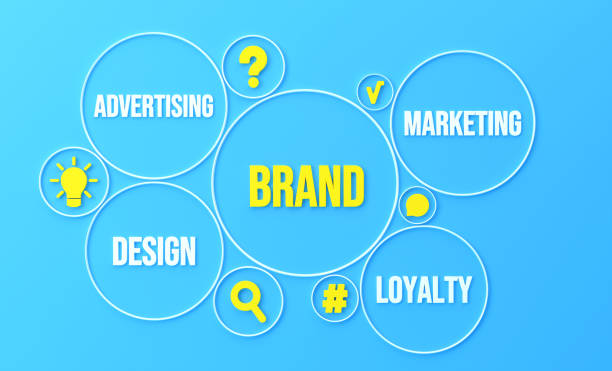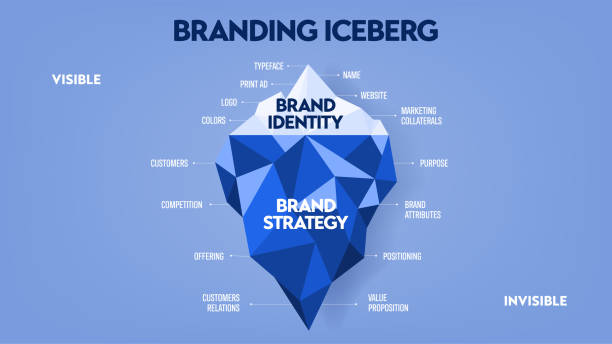Have you ever wondered what sets successful companies apart in a crowded market? Why do some brands command attention and trust, while others struggle to make a mark? The answer often lies in one powerful concept: effective corporate branding. Corporate branding isn’t just about logos and colors; it’s a strategic process that shapes how customers perceive your business, builds loyalty, and drives growth.
In today’s competitive world, strong corporate branding can be a game-changer. It’s not only the key to differentiating yourself but also a way to communicate your values, mission, and identity. Also, this post dives into actionable steps to create an effective corporate branding strategy that will elevate your business. So, let’s explore how you can transform your brand and drive meaningful growth.
What Is Effective Corporate Branding, and Why Does It Matter?
Corporate branding is the holistic approach to managing a business’s identity and reputation. It’s more than a logo or a catchy slogan; it’s the perception people have about your company every time they see your name, hear your story, or interact with your products or services. Additionally, an effective corporate brand becomes an asset that can drive customer loyalty, attract top talent, and build investor confidence.
Think about well-known brands like Apple, Nike, or Tesla. Moreover, they’ve built powerful corporate brands by consistently delivering on their promises, establishing emotional connections with customers, and embodying values that go beyond their products. So, here’s why effective corporate branding matters for your business:
- Brand Recognition: A well-crafted brand identity makes you recognizable, even in a crowded marketplace.
- Trust Building: Consumers prefer brands they can trust. Corporate branding helps establish credibility.
- Customer Loyalty: Customers are more likely to stay loyal to brands that resonate with their values and needs.
- Competitive Edge: Branding can set you apart from competitors by emphasizing unique aspects of your company.
Key Elements of an Effective Corporate Branding Strategy
Building a corporate brand takes more than a few marketing materials. Additionally, it requires a well-rounded strategy that captures the essence of your business and resonates with your audience. So, here are the essential elements you’ll need to establish a strong corporate brand:
1. Define Your Brand Purpose and Values
Every successful brand is built on a clear purpose and a set of core values. Additionally, your brand purpose is the “why” behind your business—why you exist and what you aim to achieve beyond profits. So, it’s what your customers can relate to and believe in. To define your brand purpose and values:
- Ask Why You Started: Reflect on the reasons behind your company’s founding. What problems do you solve?
- Identify Core Beliefs: Consider the values that guide your company culture and decisions.
- Focus on Impact: Think about how you want to impact customers, communities, or industries.
When your brand has a well-defined purpose and clear values, it becomes easier to communicate your identity and create authentic connections.
2. Craft a Distinctive Brand Identity
Your brand identity is the visual and emotional expression of your business. Also, it includes your logo, color scheme, typography, imagery, and tone of voice. So, a cohesive and distinctive brand identity makes your business memorable and immediately recognizable. When crafting your brand identity:
- Be Consistent: Use the same visual and messaging elements across all platforms and materials.
- Reflect Your Values: Choose design elements and language that represent your brand purpose.
- Stand Out: Aim to be unique but relevant to your industry and audience.
Creating a memorable brand identity helps customers associate your brand with quality and professionalism.
3. Know Your Target Audience
An effective corporate brand resonates deeply with its intended audience. Additionally, knowing who your target audience is—along with their needs, desires, and challenges—enables you to tailor your brand messaging to them. So, researching your audience involves:
- Analyzing Demographics and Psychographics: Go beyond age and location. Also, explore their interests, values, and aspirations.
- Understanding Pain Points: Identify the problems or needs that your brand can solve.
- Segmenting Your Audience: Create buyer personas to understand the nuances of different customer segments.
With a well-defined audience, your branding will feel more personalized and relevant, creating a stronger impact.

4. Develop a Compelling Brand Story
People are naturally drawn to stories, and a powerful brand story can make your business relatable and memorable. Additionally, your brand story should communicate who you are, what you stand for, and why you’re different. So, crafting your brand story involves:
- Highlighting Key Moments: Share the defining moments in your company’s journey.
- Focusing on Challenges and Triumphs: Acknowledge the obstacles you’ve overcome to showcase resilience.
- Connecting Emotionally: Convey your story in a way that resonates with your audience’s values or experiences.
A compelling brand story allows customers to connect with your brand on an emotional level, strengthening loyalty and trust.
Implementing Your Effective Corporate Branding Strategy
Once you’ve built the foundation of your corporate brand, it’s time to implement it across all channels. Additionally, this is where consistency and commitment play a vital role. So, here’s how to bring your brand to life:
1. Create a Brand Style Guide
A brand style guide serves as the roadmap for maintaining brand consistency. Furthermore, it should outline your logo usage, color palette, typography, messaging, and tone of voice. To create a useful brand style guide:
- Document Visual Standards: Include detailed instructions for logo placement, colors, and fonts.
- Set Tone and Voice Guidelines: Describe the preferred tone for different contexts, such as social media or customer support.
- Share with Team Members: Make it accessible to everyone in your organization to ensure brand consistency.
2. Invest in Employee Branding
Your employees are your brand ambassadors. When they believe in the company’s values, they naturally promote a positive image of the brand. So, effective employee branding involves:
- Aligning Internal Culture: Ensure that your company culture reflects your brand values.
- Providing Brand Training: Educate employees on your brand’s mission, vision, and purpose.
- Encouraging Social Sharing: Motivate employees to share positive experiences about your brand.
When employees feel a strong connection to the brand, they can communicate it authentically to customers, partners, and other stakeholders.
3. Maintain a Consistent Online Presence
In today’s digital-first world, your online presence is a significant part of your corporate brand. Moreover, make sure your website, social media profiles, and content all reflect your brand identity. So, to maintain consistency online:
- Optimize Your Website: Ensure it’s visually aligned with your brand and user-friendly.
- Curate Social Media Content: Share content that reinforces your brand values, purpose, and expertise.
- Engage with Followers: Respond to comments and messages professionally to build a positive image.
A cohesive online presence can strengthen your brand’s visibility, credibility, and reputation.
4. Measure and Adapt Your Branding Efforts
Corporate branding is an ongoing process that requires regular evaluation and adaptation. Additionally, use performance metrics and customer feedback to understand the impact of your branding strategy. So, key metrics to track include:
- Brand Awareness: Measure social media engagement, website traffic, and media mentions.
- Customer Loyalty: Track retention rates, repeat purchase rates, and Net Promoter Score (NPS).
- Brand Perception: Gather feedback through surveys or focus groups to understand how customers perceive your brand.
By continually measuring and refining your brand, you ensure it remains relevant and effective in a changing marketplace.

Conclusion: Start Building Your Effective Corporate Branding Today
In a world where competition is intense, an effective corporate branding strategy is essential to stand out, build trust, and drive growth. Additionally, by defining your brand’s purpose, developing a distinctive identity, knowing your audience, and maintaining consistency, you can create a brand that resonates with customers and fuels long-term success. Also, corporate branding is not a one-time effort—it’s an evolving journey that grows alongside your business.
So, are you ready to transform your business with a strong corporate brand? Start implementing these strategies today, and watch your brand make a lasting impact. Whether you’re a small startup or an established company, the power of effective corporate branding is within reach—embrace it to unlock new levels of recognition and success.
By following these steps, your business can build a memorable brand that stands out in the marketplace, fosters customer loyalty, and drives sustainable growth. Lastly, embrace the process of corporate branding, and see how it can transform your business trajectory.








